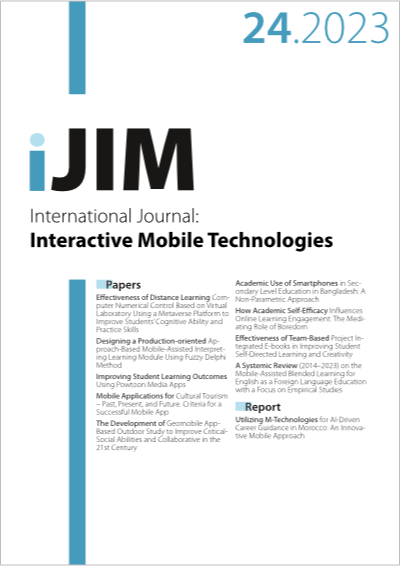A Systemic Review (2014–2023) on the Mobile-Assisted Blended Learning for English as a Foreign Language Education with a Focus on Empirical Studies
DOI:
https://doi.org/10.3991/ijim.v17i24.42019Keywords:
Mobile learning, Blended learning, Mobile-assisted blended learning, English as a Foreign Language (EFL), Sustainable educationAbstract
Over the past two decades, due to the rapid development of information and communication technologies (ICT), mobile learning (M-learning) and blended learning (BL) have emerged as new trends in sustaining English as a foreign language (EFL) education. The tumultuous COVID-19 pandemic has disrupted traditional teaching and learning, but it has also accelerated the integration of technology in EFL education. Mobile-assisted blended learning (MABL) combines mobile-assisted language learning (MALL) and BL into a single framework that effectively addresses their individual limitations when used in isolation. However, reviews of MABL, particularly in the context of EFL education, are scarce. Sourced from two major databases, namely Web of Science and Scopus, and two supplementary databases (Education Resources Information Center and Mendeley), 25 studies were extracted out of 205 in the latest decade, using specific exclusion and inclusion criteria. This review aims to shed light on the trend of utilizing advanced and effective pedagogy and teaching tools to benefit stakeholders in the sustainable development of English as a foreign language.
Downloads
Published
How to Cite
Issue
Section
License
Copyright (c) 2023 Qing Zhou, Harwati Hashim, Nur Ainil Sulaiman

This work is licensed under a Creative Commons Attribution 4.0 International License.



